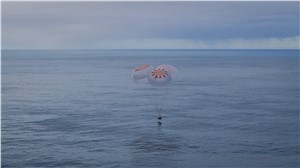
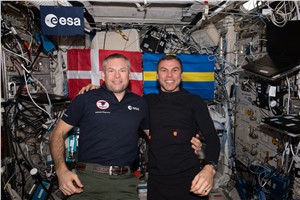
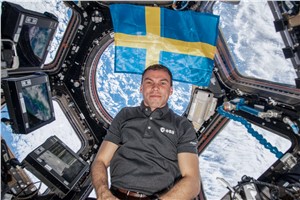
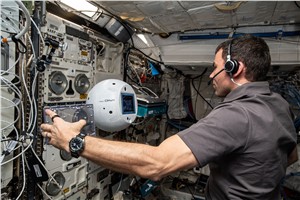
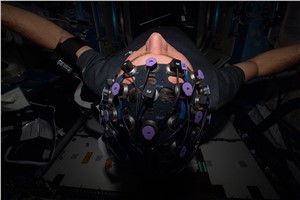
After 20 days in space, ESA project astronaut Marcus Wandt returned to Earth today at 13:30 GMT/14:30 CET, marking the end of his Muninn mission to the International Space Station (ISS).
Marcus and the Axiom Mission 3 (Ax-3) crew waved goodbye last Wednesday to their crewmates on the orbital complex, including ESA fellow astronaut and commander Andreas Mogensen. This was the first time two Scandinavians lived and worked together in space.
The Ax-3 crew closed the hatch of the SpaceX Dragon capsule at at 12:25 GMT/ 13:25 CET on 7 February. The spacecraft undocked autonomously from the Space Station two hours later, at 14:20 GMT/15:20 CET. By that time, Marcus completed about 288 orbits around Earth.

By Orbit Type (LEO, MEO, GEO, Others), by Architecture (Transparent Payload, Regenerative Payload), by Service Type (Fixed Satellite Service, Mobile Satellite Service, Broadband Satellite Service, Others), by End-User (Telecommunication, Government, Defense, Aviation, Others) and Region, with Forecasts from 2025 to 2034
Download free sample pagesMarcus served as a mission specialist during the journey, sharing the ride with Walter Villadei from Italy, Alper Gezeravci from Türkiye and Michael López-Alegría, a dual US-Spanish citizen.
After completing a series of burns to lower its orbit, the spacecraft entered Earth’s atmosphere and deployed its parachutes for a water-landing. Marcus and crew splashed down off the coast of Florida, USA, on 9 February at 13:30 GMT/14:30 CET. The trip back to our home planet took them about 47 hours.
Marcus will now fly to Cologne, Germany, where he will be monitored by ESA’s space medicine team as he readapts to Earth’s gravity at ESA’s European Astronaut Centre and at the German Aerospace Centre’s :envihab facility.
Muninn success
Marcus blasted into space towards the Space Station on 18 January 2024. During his time on board, Marcus supported nearly 20 European experiments and spent more than 100 hours conducting science and technology demonstrations.
“During his nearly three-week stay on the Space Station Marcus carried out a series of experiments for the benefit of Swedish and international research,” says Anna Rathsman, Director General of the Swedish National Space Agency, upon Marcus’s return.
"Through his spaceflight, he contributed to maintain Sweden as a leading nation in space knowledge. He is also a source of inspiration for a whole generation of Swedes in natural sciences," she adds.
“Sweden’s swift and robust decision-making is at the heart of Muninn mission success. Marcus’s fast-track mission as an ESA project astronaut showed that through ESA, Europe can be agile and flexible and ready to join a changing human-spaceflight landscape,” added ESA Director General Josef Aschbacher.
“This mission of firsts diversified our access to space, accelerated important science and research, and helped gain experience with new partners. The Muninn mission has better prepared ESA and Europe for a post-ISS future,” says Josef Aschbacher.
Science that matters
The Muninn mission carries on a legacy of relevant European research in multiple science domains. The findings will help shape the future of human and robotic exploration while enhancing technological developments on Earth.
Marcus operated from space a team of robots on Earth for the Surface Avatar experiment, giving European teams valuable feedback to improve the intuitive interface and paving the way to future robotic teleoperations.
The European astronaut ran the Swedish experiment Orbital Architecture to investigate how people’s physical and psychological well-being can be affected by living in extreme and confined environments.
Another Swedish experiment looking at the unexpected benefits of microgravity was Memo BC. Marcus placed boundary cap neural stem cells in the ICE Cubes facility on Europe’s Columbus module to monitor changes in their cellular structures and gene expression. Researchers believe that this type of cell could support the survival of other cells after being exposed to microgravity.
Marcus also took photos from space and used a 360° camera to record a tour of the Space Station, connecting with global audiences and the younger generations.